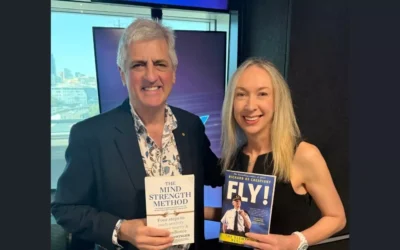The power Of mindfulness for satisfaction and success


Ever feel like there are just not enough hours in the day? You’re likely to be juggling work, family and many other commitments every day. If your life is super busy, your mind could be too! In order to live a life driven by values rather than fear, we need to learn ways to quieten the busy mind. Mindfulness is one of the most effective ways of doing this.
Here are Six Benefits of Mindfulness you need to know about and a proven mindfulness technique you can use to bring you back to the present moment…
1. Improves Your Focus
While we’re trying to complete one task, we’re often thinking of all the other tasks that still need doing. Mindfulness helps us become aware of how we’re being distracted and brings us back to the present.
2. Helps Regulate Emotions
Research has demonstrated that mindfulness is effective in helping people control their emotions. By using mindfulness techniques, you can acknowledge and process your emotions and become less reactive.
3. Can Increase Energy Levels
When you spend less time and energy worrying and ruminating, you’ll have more energy for all the other things in your life – especially your goals.
4. Improves Decision-Making
With better focus, heightened awareness and emotional control, the quality of your decision-making will be significantly better.
5. Helps You Prioritise
Mindfulness helps you become more intentional and so you can align your goals with your daily tasks. In turn, you will make time for and accomplish those goals despite any stress, anxiety and distractions you encounter throughout your day.
6. Combats Stress, Worry and Anxiety
Practising mindfulness helps us stand up to negative thoughts and worries based on fear rather than reality.
So how does one use mindfulness techniques to accomplish this? Try using the STOP strategy
Step One: Stop and Stand Up To Worry
Notice when worry is starting to boss you around and take immediate action by saying STOP. One of the best ways to do this is to recognise the sensations that come with worry. Which of these do you experience?
Increased heart rate
Rapid, shallow breathing
Tightening muscles
Light-headedness
Tingles or electric feelings in the arms and legs
Physiological sensations of anger or ‘fight mode’
Once you are aware of how anxiety and stress feel it is easier to deal with them by moving onto step two.
Step Two: Take a few long, slow out-breaths
When we are anxious, worried or stressed, adrenaline increases our heart rate and makes us breathe more rapidly. This is designed to oxygenate the muscles and prime the body to defend itself. In the absence of a real threat this response just leads to tension that can wreak havoc on the body and make it difficult to sleep.
To counter this, take a long, slow out-breath. As you exhale, see if you can notice where in your body the muscle tension or physiological experiences of anxiety are and breathe through them, observe them and allow them to just be. You don’t want to fight them, you just want to notice them and create space, kindness and love around them.
Once you have completed your long, slow out-breath, just let your lungs fill up naturally without doing anything purposeful with the in-breath. Repeat this, adding a pause between the out-breath and in-breath and visualise the tension and stress slipping away as you exhale.
Step Three: Observe What’s Going On Around You
When your brain is in fight or flight mode it focuses on what you feel threatened by- creating a hypervigilance to threat. This can result in catastrophising, or focusing on the worst-case scenario. For example, you might be worrying about how you’re coming across, about whether you’ll make a fool of yourself, whether your words will come out correctly.
Alternatively, your mind might be focused on fear-driven behaviours. For example, you might be working out an escape plan for how you might exit the meeting room if you start feeling sick.
This internal fear-driven focus keeps the anxiety alive. The key to success, therefore, is turning the attention outwards and observing what’s going on around you. This is powerful, mindful engagement. By purposefully focusing on the present moment, you are, by default, taking your attention away from the worry, thoughts and concerns about the future.
This is mindfulness. The essence of mindfulness is intentionally observing and allowing both your internal and your external experiences to just be, with non-judgemental curiosity.
Step Four: Proceed, Ensuring Values-Driven Action
Once you have stopped, taken a few long, slow out-breaths and observed the five senses around you, you should find yourself in a calmer state. You are then ready to go to ‘P’. This simply refers to proceeding with what you were doing before the anxiety took hold.
Mindfulness is the foundation for reaching your potential. There are lots of ways to practise mindfulness. Experiment to find out which practise works best for you. Pick up a copy of ‘The Mind Strength Method’ to learn more about standing up to worry thoughts and effective strategies for practising mindfulness.
Want to know more about mindfulness and how it can help your workplace? Invite Dr Jodie to deliver one of her most in-demand keynote presentations, Mindfulness is your Superpower, either in-person or virtually for your event.







